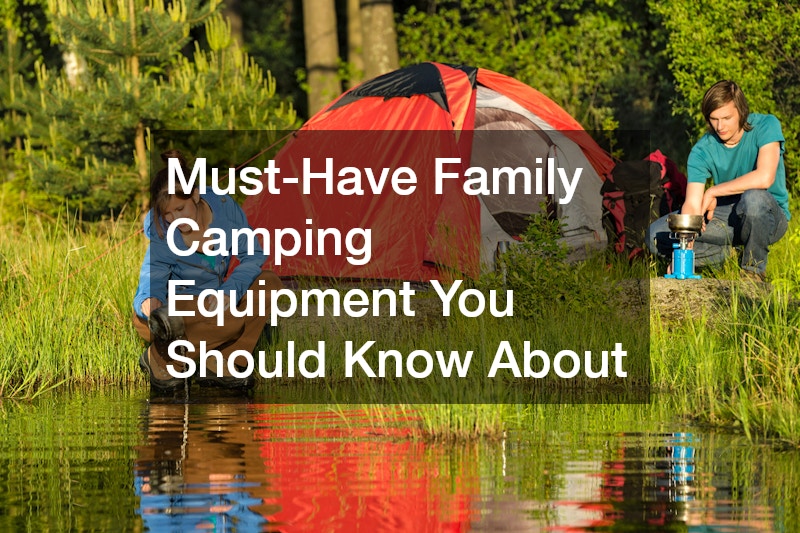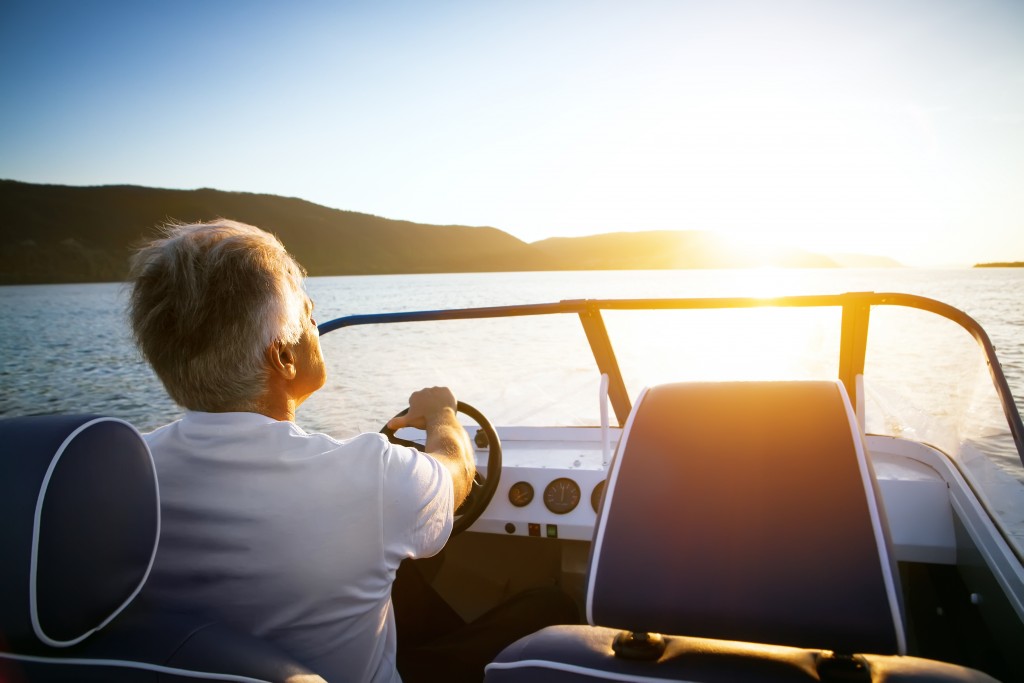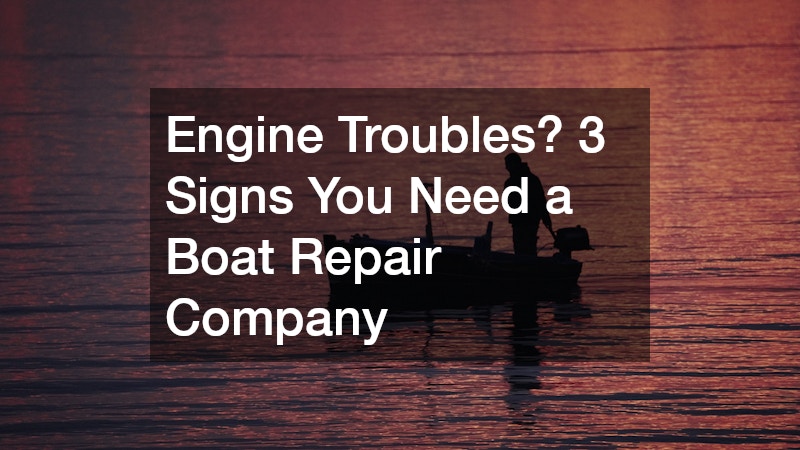Camping is one of the best ways for families to bond, unwind, and reconnect with nature. It provides an opportunity to step away from the hustle and bustle of everyday life, immerse yourself in the simplicity of the outdoors, and create cherished memories with loved ones. Whether it’s a weekend getaway to a local campsite or an extended trip deep into the wilderness, camping offers something for everyone—fun, relaxation, and adventure- and selecting the perfect family camping equipment is the best place to start.
Beyond the basics, camping gear has evolved significantly over the years. Modern innovations, such as lightweight materials, solar-powered devices, and multi-functional tools, have made it easier than ever to camp comfortably without sacrificing the thrill of being in nature. For families traveling with vehicles, ensuring your car or RV is road-ready is equally vital. Partnering with professionals such as a transmission shop or an RV repair specialist ensures you won’t face technical setbacks on your journey.
Whether you’re a seasoned camper or embarking on your first trip, the goal of this guide is to provide a comprehensive breakdown of all the must-have equipment for your family camping adventure. From practical tips to affordable options, you’ll find everything you need to prepare for a safe, enjoyable, and memorable outdoor experience. Let’s dive in and explore the world of family camping with confidence and excitement!
1. What Are the Basics of Family Camping Equipment?
When planning a family camping trip, certain items are non-negotiable. These essentials lay the foundation for a smooth and enjoyable outing.
Tents and Shelters
Investing in a high-quality tent tailored to your family size is essential when selecting family camping equipment. Look for features such as water resistance, multiple compartments, and easy setup. Adding a tarp or canopy can provide additional weather protection and communal space.
For families bringing a significant amount of gear or larger items like bikes or kayaks, having a reliable hitch for towing is essential. It allows you to attach trailers or additional storage solutions, ensuring you have everything needed for your camping trip.”
Sleeping Gear
A good night’s sleep is crucial when camping. Opt for durable sleeping bags, sleeping pads, or air mattresses suited to the weather conditions.
Cooking Equipment
Portable stoves, compact grills, and lightweight cookware are vital for meal preparation when choosing family camping equipment. Don’t forget utensils, dishwashing tools, and trash bags for cleanup.
Lighting and Power
Lanterns, flashlights, and headlamps are indispensable after dark. To keep devices charged, consider power banks or local generator services for larger power needs.
Safety Items
Bring a comprehensive first aid kit, emergency contact tools, and navigation gear. It’s always better to over-prepare when safety is concerned.
2. How to Choose the Right Tent for Your Family?
Picking the perfect tent is a cornerstone of successful family camping equipment. Here’s what to consider:

Size and Capacity
Choose a tent with ample room for your family and gear. A family of four might require a 6-person tent for added comfort.
Weather Resistance
Look for tents with reinforced seams and waterproof coatings to withstand rain and wind.
Easy Setup Features
Opt for tents with color-coded poles or pop-up mechanisms, especially if you’re a beginner.
Storage and Portability
Lightweight tents that pack down small are ideal for those with limited car space. Use an open car trailer for larger setups and additional camping equipment.
Additional Features
Bonus features such as storage pockets, vestibules, or a separate screen room can enhance your experience.
3. What Sleeping Bags are Best for Family Camping Equipment?
Sleeping bags come in various shapes, sizes, and insulation levels. Choosing the right ones ensures everyone stays warm and comfortable.
Temperature Ratings
Select sleeping bags rated for the lowest expected temperature on your trip.
Material and Insulation
Down insulation offers an excellent warmth-to-weight ratio, while synthetic options are more affordable and perform better in wet conditions.
Sleeping Bag Shapes
Rectangular sleeping bags provide room to stretch, while mummy bags are better for cold-weather trips.
4. How to Plan Meals with the Right Camping Cooking Equipment?
Eating well outdoors is easier with the right tools and planning.

Camping Stoves and Grills
A lightweight camping stove is perfect for small families, while portable grills are excellent for larger groups.
Cookware and Utensils
Invest in nesting pots and pans, reusable utensils, and a durable cutting board.
Meal Prep Essentials
Pre-chop ingredients at home and store them in reusable containers. A porta john company cooler ensures food stays fresh.
Food Storage Solutions
Sealable bins and bear-proof canisters keep food secure.
Keeping Clean: Sanitation Tools
A portable sink, biodegradable soap, and microfiber towels make cleaning up a breeze. If your campsite includes RV hookups or on-site facilities, ensure they are in proper working order before your trip. In remote areas, managing waste responsibly is crucial—consider nearby septic service options for long-term stays or after using portable sanitation solutions.
5. What Lighting Options are Best for Family Camping Equipment?
Proper lighting is essential for both safety and functionality during a camping trip. Whether you’re navigating the campsite after dark or creating a cozy ambiance for family activities, choosing the right lighting solutions can make a world of difference.
Lanterns and Flashlights
Lanterns are ideal for illuminating communal areas like dining tables and seating spaces. Choose models with adjustable brightness to cater to different needs, from a dim glow for ambiance to a strong beam for specific tasks. LED lanterns are energy-efficient and long-lasting, making them an excellent choice for extended trips. Flashlights, on the other hand, are indispensable for personal use. Look for durable water-resistant options, ensuring they can handle unexpected weather conditions.
Solar Lighting
Solar-powered lights are an eco-friendly and hassle-free option for camping. These lights recharge during the day and can provide hours of illumination at night. String lights powered by solar energy can also add a decorative touch to your campsite, creating a warm and inviting atmosphere. For longer trips, opt for models with USB charging capabilities as a backup for cloudy days.
Battery Considerations
Managing your lighting effectively requires a good supply of batteries or alternative power sources. Rechargeable batteries are a sustainable option and save money in the long run. However, always bring spare disposable batteries in case you’re unable to recharge. For high-energy needs, consider local generator services to power more demanding lighting setups or recharge essential devices.
For high-energy needs, consider local generator services to power more demanding lighting setups or recharge essential devices. If you’re camping with an RV, ensure that your vehicle’s electrical system is in good condition; consider a quick RV repair checkup to avoid power-related issues during your trip.
Safety and Practicality
Choose lighting options that are not only functional but also safe. Avoid open flames, such as candles or oil lamps, which can pose a fire hazard. Instead, invest in durable, weather-resistant devices that can withstand the elements. Proper placement of lighting is also essential for preventing accidents—ensure pathways and critical areas like the tent entrance are well-lit.
By selecting the right mix of lanterns, flashlights, headlamps, and solar lights, your family can enjoy a well-lit campsite that’s both practical and inviting. Whether you’re exploring after sunset or simply relaxing by the tent, these lighting options will enhance your camping experience while keeping everyone safe and comfortable.
6. How Important is Weather-Appropriate Clothing?
Dressing right can make or break your family camping experience, especially in unpredictable weather.

Layering Strategy
Pack layers that can be added or removed to suit changing temperatures.
Waterproof Clothing
A durable rain jacket and waterproof pants are essential in wet climates.
Footwear
Invest in sturdy hiking boots and comfortable camp shoes.
Warmth Accessories
Hats, gloves, and scarves are small but vital additions for cooler weather.
UV Protection Wear
Lightweight, long-sleeve shirts and wide-brimmed hats shield against the sun.
7. What Safety Gear is Necessary for Family Camping?
Safety should always be a priority during camping trips, and should be factored into your family camping equipment.
First Aid Kit
Pack a comprehensive kit with bandages, antiseptics, and medications.
Navigation Tools
Carry a map, compass, or GPS device, and ensure you know how to use them.
Emergency Contact Devices
A satellite phone or personal locator beacon provides peace of mind in remote areas.
Survival Gear
Include a multi-tool, fire starters, and an emergency blanket.
Animal and Insect Protection
Bug spray, bear spray, and proper food storage are critical for keeping wildlife at bay.
8. How to Keep Your Family Entertained at the Campsite?
While the beauty of nature often speaks for itself, keeping everyone entertained at the campsite can elevate the camping experience, particularly for younger family members. Camping is an excellent opportunity to disconnect from technology and enjoy quality time together, but it’s helpful to have a variety of activities included in your family camping equipment to keep everyone engaged and happy.
Outdoor Games
Outdoor games are a fantastic way to bring the family together and get everyone moving. Classics like frisbee, cornhole, and badminton are easy to pack and fun for all ages. If you’re camping in a large, open area, games like capture the flag or tag can make use of the space while encouraging physical activity. For younger children, bubble wands or kites can provide hours of amusement. Don’t forget to pack simple items like a ball or skipping rope, as they can be used for a variety of games.
Exploration Gear
Encouraging exploration is one of the best ways to engage with nature. Gear like compasses, magnifying glasses, and field guides can help children discover more about the plants, insects, and wildlife around them. For families with older children or teens, consider bringing a GPS device for geocaching, a treasure-hunting activity that combines technology with outdoor exploration. These activities foster a sense of adventure and make the camping trip more memorable.
Nature-Based Activities
Nature provides endless opportunities for creativity and learning. Plan activities like a scavenger hunt where kids search for specific leaves, rocks, or animal tracks. Collecting items for a nature craft session can also be a fun way to spend time—pressing flowers, making leaf rubbings, or creating art from sticks and stones are excellent options. Stargazing is another magical activity, especially in remote campsites with little light pollution. Bring a telescope or download a stargazing app to identify constellations and planets.
Quiet Time Activities
While high-energy games and activities are essential, it’s also good to include quieter options for downtime. Books, coloring supplies, or puzzles are perfect for relaxing moments at the campsite. Consider creating a cozy corner with blankets and cushions inside the tent or under a tarp for kids to unwind. Board games or card games can also provide entertainment for the whole family, especially on rainy days or in the evenings.
9. What Organizational Tools are Most Useful?
Keeping gear organized is key to reducing stress during your trip. Ensure you have organizational tools included in your family camping equipment.

Packing Tips
Pack by category and label bags or bins for easy access.
Storage Solutions
Use stackable bins, hanging organizers, and gear lofts to maximize space.
Camping Checklist
A detailed checklist ensures nothing important gets left behind.
Campsite Routine
Establishing routines for meals, cleanup, and downtime helps things run smoothly.
Time Management Techniques
Plan activities but leave room for relaxation and spontaneity.
10. What are Affordable Family Camping Equipment Options?
Camping doesn’t have to break the bank. Here are some budget-friendly tips:
Budget Tents and Gear
Look for sales or starter kits designed for families.
Second-hand Purchases
Check thrift stores or online marketplaces for gently used camping gear.
DIY Camping Solutions
Get creative with homemade solutions like DIY fire starters or makeshift storage.
Cost-effective Cooking Gear
Opt for multi-purpose tools to reduce the need for extra items.
Renting vs. Buying
For occasional trips, renting gear like a portable restroom trailer or cooking equipment can save money.
Camping is an enriching experience that brings families closer to nature and each other. With the right family camping equipment, you can create a safe, enjoyable, and memorable adventure. From reliable tents and comfortable sleeping bags to practical safety gear and fun activities, being well-prepared ensures everyone has a great time. Don’t forget to consult local insurance agencies for trip coverage and a transmission shop for vehicle checkups before embarking on your journey. From reliable tents and comfortable sleeping bags to practical safety gear, being well-prepared ensures everyone has a great time. If you’re traveling with an RV, scheduling an RV repair service before departure can help prevent mechanical setbacks, keeping your trip smooth and stress-free. Happy camping!




